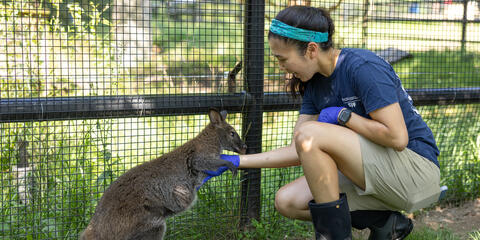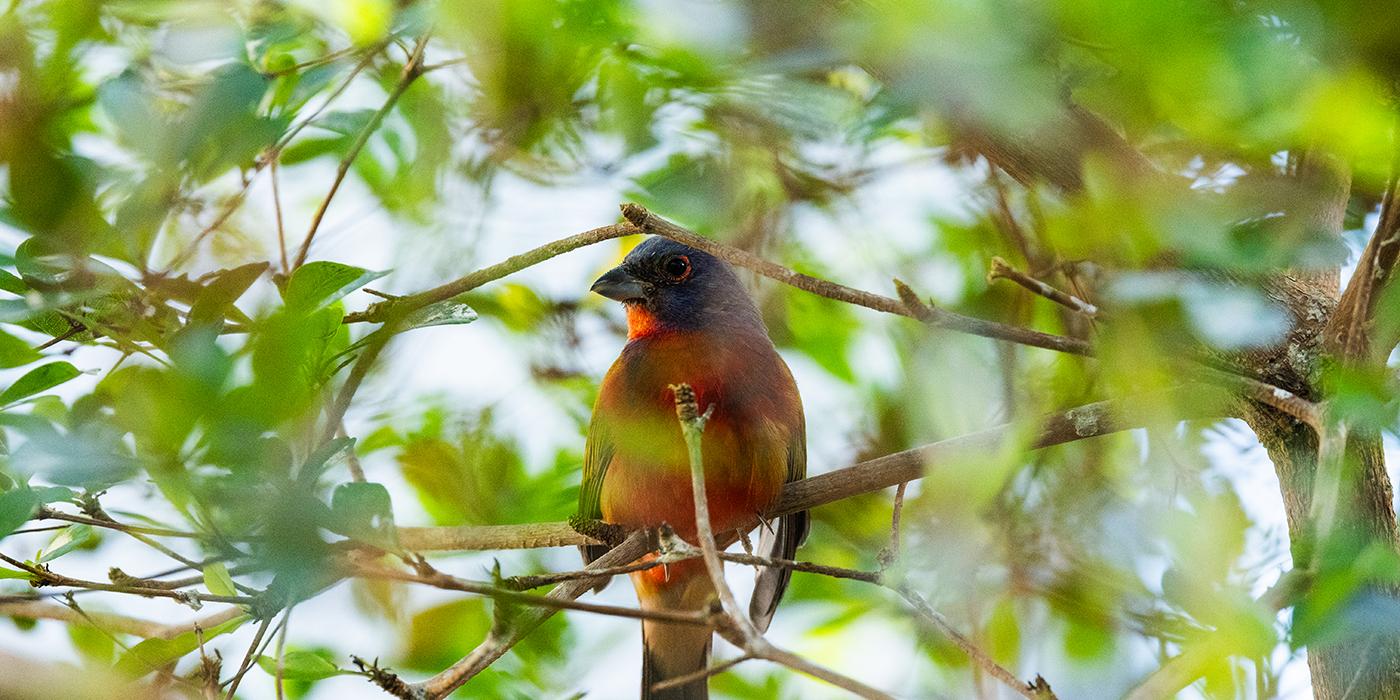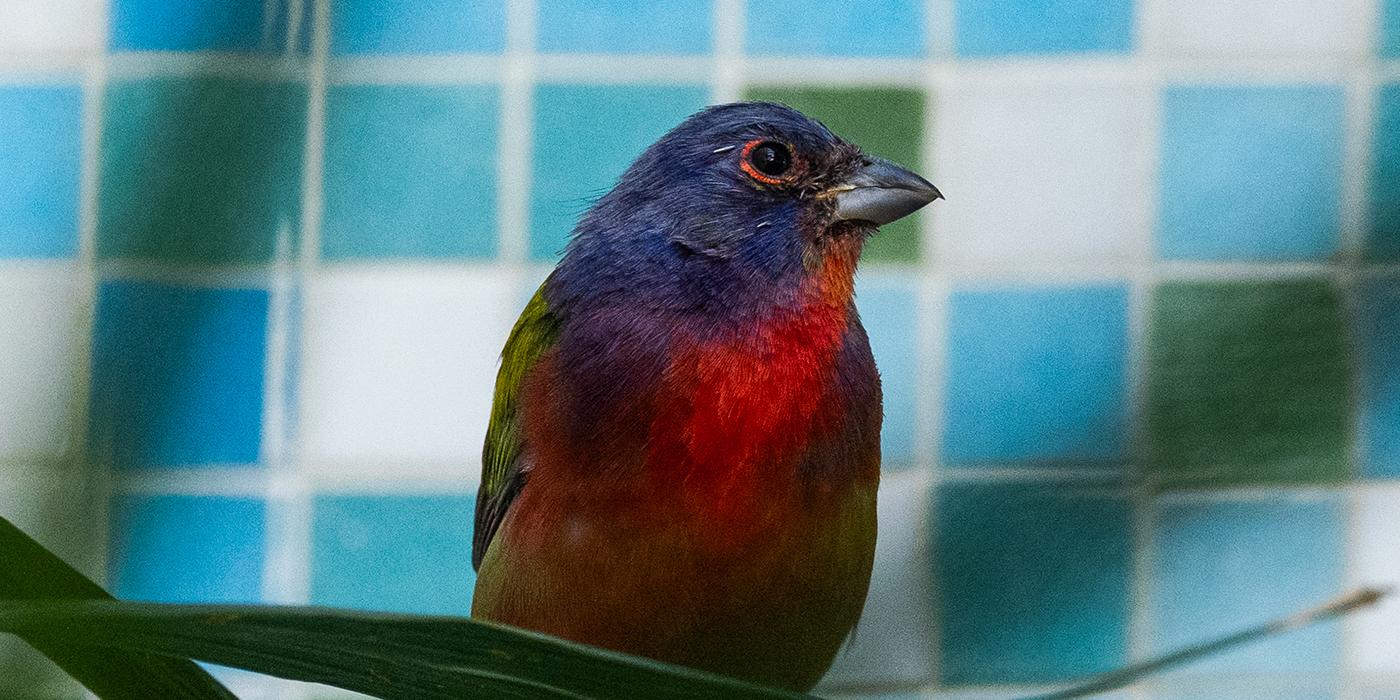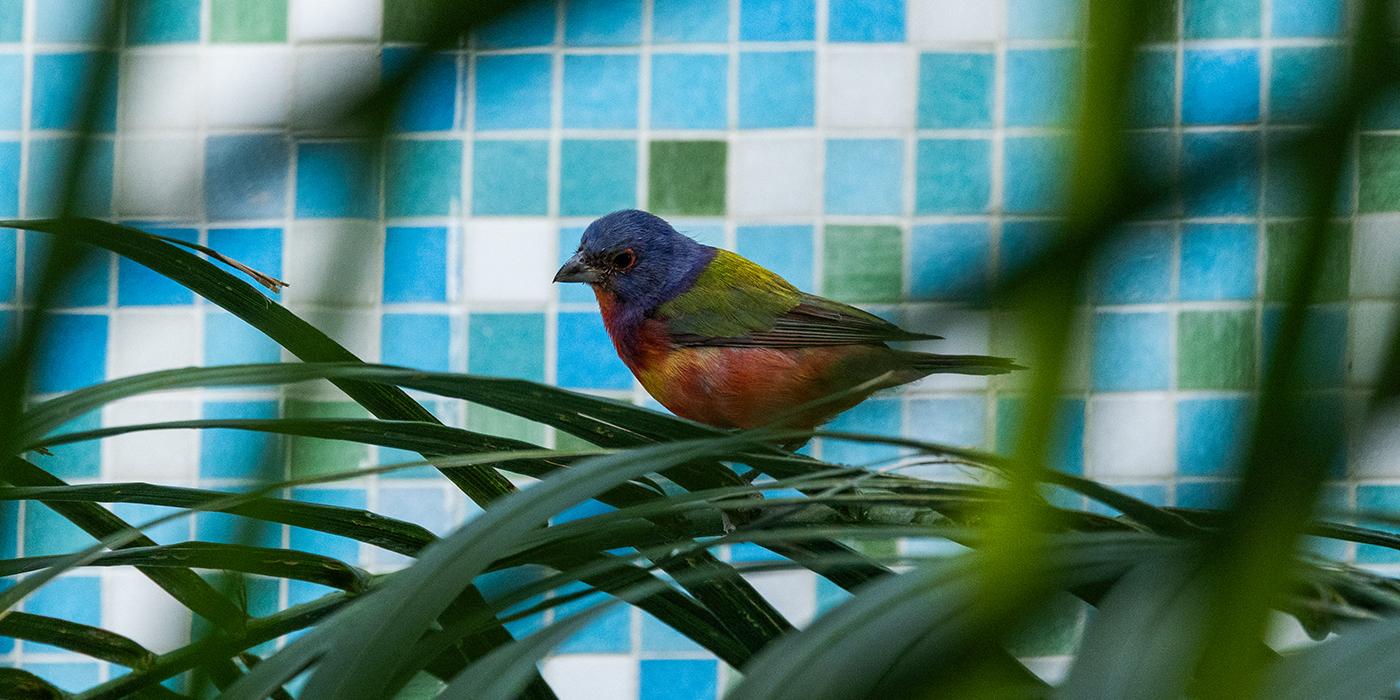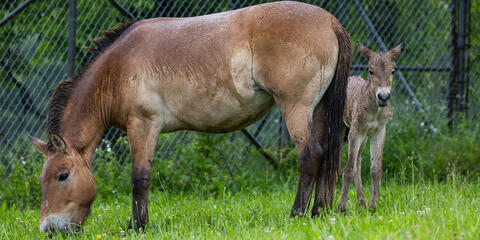Painted buntings are small songbirds that sport some of the most colorful feathers in North America, with males featuring brilliant blue, red, and green plumage. Despite their bright colors, these birds can be surprisingly hard to spot as they often stay hidden in dense vegetation.
Physical Description
Adult males have a bright blue head, red throat and chest, and a bright green back. Females are a plain green all over. Juveniles look more like adult females but are grayer in color until they mature. They have short, relatively thick beaks.
Size
About the size of a sparrow, the painted bunting weighs between 0.46 to 0.67 ounces (13-19 grams) and is on average around 5 inches (13 centimeters) long.
Native Habitat
The species has two distinct populations in Southern North America and Central America. The western population favors scrub-brush habitats while the eastern population prefers coastal plains and agricultural lands. Generally, this species prefers areas with dense brush as well as the edges of woodland habitats.
The western population winters in southern Mexico and Central America while the eastern population winters in southern Florida and the Caribbean. The western population breeds from Kansas south to Texas, Louisiana, and northern Mexico, while the eastern population breeds along the coast of North Carolina south to northern Florida.
Lifespan
Up to 12 years in the wild.
Communication
This species has numerous calls, including bright, high-pitched chirps and warbling whistles.
Food/Eating Habits
Eats seeds and insects. The painted bunting mostly forages near the ground. Insects are favored in summertime.
Sleep Habits
Active during the day and sleeps in dense vegetation at night.
Social Structure
During breeding season males will establish and defend territories from other males. Fighting males will peck, scratch, and strike each other, sometimes to the death. Females that enter a male’s territory are treated to numerous displays in hopes of wooing her. Outside of breeding season painted buntings are mostly solitary though they may form small flocks on the wintering grounds.
Reproduction and Development
They breed from late spring through early summer. The nest is typically 3-6 feet off the ground and females usually lay 3 or 4 bluish white or pale gray eggs with brown spots. Females incubate the eggs for 11-12 days. The hatchlings leave the nest around two weeks after hatching.
Conservation Efforts
This species is relatively common, with an estimated global breeding population of 15 million birds. However, a survey of North American birds found the species declined 33% between 1966 and 2019. The primary threats to the species are habitat loss and degradation from human development.
Painted buntings are also trapped and sold as cage birds in their wintering grounds in Mexico, Central America, and the Caribbean. Researchers suggest tighter regulations on the remaining illegal wildlife trade in this species would help protect it. More broadly, additional research is needed to develop a conservation strategy to reverse this species’ long term decline.
Help this Species
- Be a smart consumer. Choose products made with sustainable ingredients, such as Smithsonian certified Bird Friendly coffees, which support farmers striving to limit their impact on wildlife and habitat.
- Practice ecotourism by being an advocate for the environment when you’re on vacation. During your travels, support, visit or volunteer with organizations that protect wildlife. Shop smart too! Avoid buying products made from animals, which could support poaching and the illegal wildlife trade.
- Choose your pets wisely, and do your research before bringing an animal home. Exotic animals don’t always make great pets. Many require special care and live for a long time. Tropical reptiles and small mammals are often traded internationally and may be victims of the illegal pet trade. Never release animals that have been kept as pets into the wild.
- Be a responsible cat owner, and keep cats indoors or under restraint when outside. Never release animals that have been kept as pets into the wild.
- Support organizations like the Smithsonian’s National Zoo and Conservation Biology Institute that research better ways to protect and care for this animal and other endangered species. Consider donating your time, money or goods.
- Share the story of this animal with others. Simply raising awareness about this species can contribute to its overall protection.
Animal News
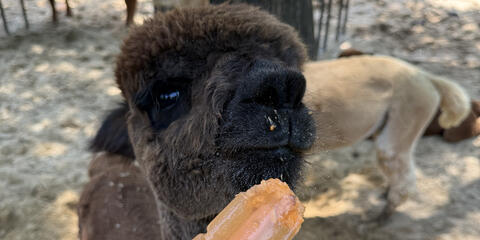
Keeping the Farm Animals Cool with Frozen Treats
